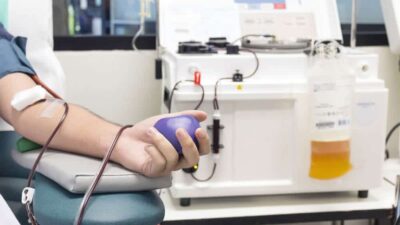
Back pain affects millions of people worldwide, but the experience of it—and how it should be addressed—varies dramatically depending on one’s stage of life. From the developing bodies of children to the age-related challenges faced by older adults, understanding these differences is key to preventing and managing pain effectively. Tailoring care and preventive strategies to each life stage not only promotes spine health but also enhances overall quality of life.
Back Pain in Children and Adolescents: Growing Bodies, Growing Concerns
Though often overlooked, back pain in children and teens is becoming increasingly prevalent. Growth spurts during adolescence can create an imbalance between the rapid elongation of bones and the slower development of muscles, ligaments, and tendons. This mismatch can lead to stiffness, soreness, or even misalignment.
In addition to biological factors, lifestyle choices also play a significant role. The surge in screen time has contributed to widespread poor posture, with children often slouching over phones, tablets, or laptops. Similarly, heavy, improperly worn backpacks place unnecessary pressure on the developing spine. Young athletes, particularly those involved in high-impact or repetitive-motion sports like gymnastics, football, or dance, are also at greater risk for strain and injury.
Prevention in this age group starts with education. Teaching proper posture, encouraging regular breaks from screens, and investing in ergonomic school supplies can make a big difference. Parents and educators should also emphasize stretching, core strengthening, and sports safety. These foundational habits can not only alleviate current discomfort but also set the stage for healthier spinal outcomes later in life.
Young Adults and Back Pain: Workplace Habits and Physical Demands
As individuals move into their twenties and thirties, lifestyle shifts—particularly related to work and fitness—can trigger or worsen back pain. Many young adults spend extended hours seated at desks, often with inadequate back support or improper workstation setups. Combined with a sedentary routine, this can lead to stiffness, muscle imbalances, and chronic lower back pain.
On the flip side, active individuals may experience pain due to poor form during workouts or sudden overexertion. Improper lifting techniques, whether at the gym or on the job, are a frequent culprit for strain and injury among this demographic.
The key to prevention is balance. Young adults should aim to integrate physical activity throughout the day, especially stretching and core strengthening exercises. Ergonomic adjustments in workspaces—such as adjustable chairs, lumbar support, and monitor positioning—can also go a long way. Learning safe lifting techniques and listening to the body’s limits can help avoid long-term damage and build resilience.
Back Pain in Middle Age: Managing Wear and Tear
For people in their forties and fifties, back pain often stems from accumulated wear and tear on the spine. Conditions like degenerative disc disease, herniated discs, and osteoarthritis begin to emerge more frequently, often accompanied by stiffness, reduced flexibility, or persistent aching. As metabolism slows and muscle mass declines, weight gain can also become a factor, increasing the mechanical load on the back.
Proactive management is essential at this stage. Incorporating low-impact activities like walking, swimming, or yoga helps preserve flexibility and strengthen the muscles that support the spine. Maintaining a healthy weight through diet and exercise reduces strain and inflammation, while regular visits to healthcare professionals—such as Branko Prpa M.D. Spine Surgery—can help catch and treat emerging issues before they worsen.
Stress management also becomes increasingly important, as tension can manifest physically and exacerbate pain. Techniques such as mindfulness, massage therapy, and deep breathing exercises may complement more traditional treatments.
Back Pain in Older Adults: Chronic Pain and Degenerative Conditions
In seniors, back pain is often associated with age-related conditions that may require more intensive intervention. Osteoporosis can weaken bones, making the spine more susceptible to fractures, while arthritis and spinal stenosis may lead to chronic pain and reduced mobility. Muscular atrophy and balance issues can further complicate day-to-day movement, increasing the risk of falls and injuries.
Treatment at this stage must be gentle yet effective. Physical therapy focused on flexibility, strength, and balance—often delivered through activities like water aerobics, tai chi, or chair yoga—can help maintain independence and reduce discomfort. Nutritional support is equally critical; calcium- and vitamin D-rich diets help preserve bone density and overall musculoskeletal health.
In more severe cases, pain management may include medications, injections, or even surgery. However, these decisions should be made in close consultation with spine specialists, who can weigh the risks and benefits based on the individual’s overall health and lifestyle.
Embracing an Age-Specific Approach to Back Care
Back pain may be a near-universal experience, but it shouldn’t be treated with a one-size-fits-all approach. Each phase of life brings its own challenges and opportunities for maintaining spinal health. From teaching good habits in childhood to managing chronic conditions in old age, understanding how back pain evolves is essential for prevention and recovery.
By taking a proactive, personalized approach to back care—tailored to your current life stage—you can reduce your risk, improve mobility, and live more comfortably at any age.
For visual tips and detailed age-based strategies, don’t miss the accompanying infographic that breaks down targeted prevention and treatment recommendations for every generation.












